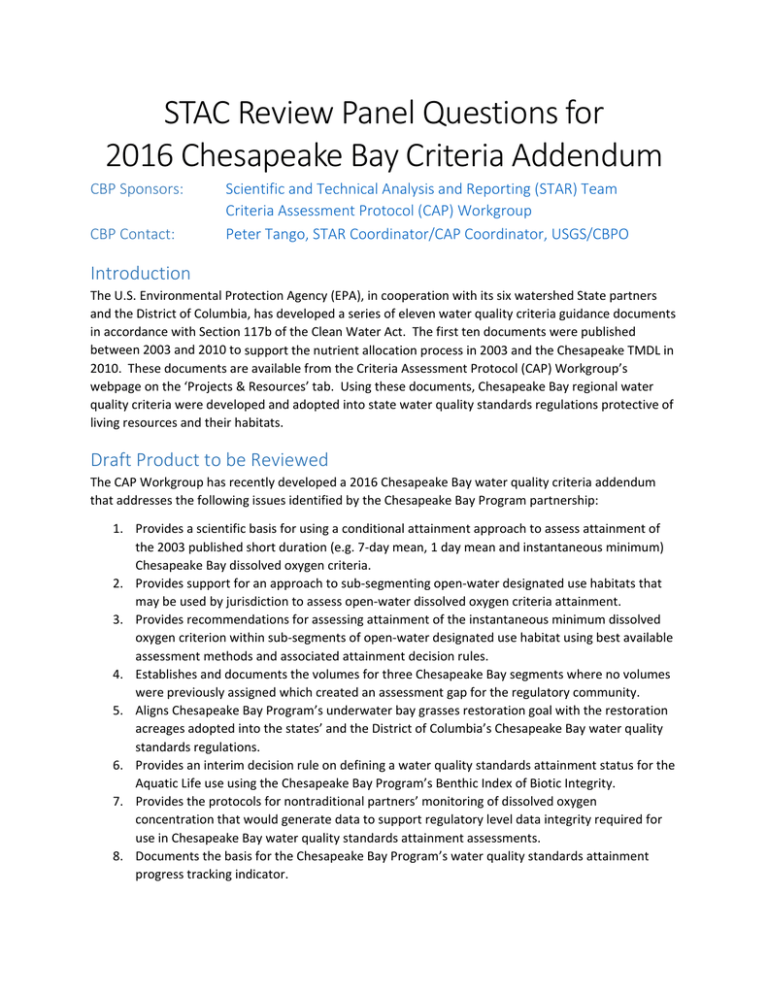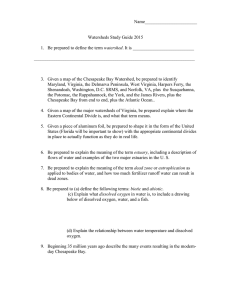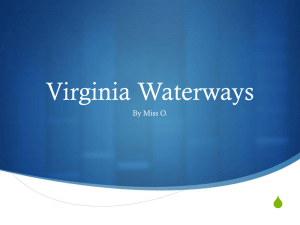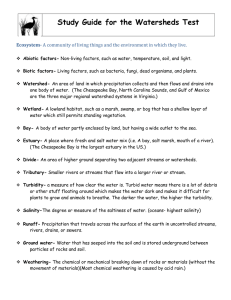STAC Review Panel Questions for 2016 Chesapeake Bay Criteria
advertisement

STAC Review Panel Questions for 2016 Chesapeake Bay Criteria Addendum CBP Sponsors: CBP Contact: Scientific and Technical Analysis and Reporting (STAR) Team Criteria Assessment Protocol (CAP) Workgroup Peter Tango, STAR Coordinator/CAP Coordinator, USGS/CBPO Introduction The U.S. Environmental Protection Agency (EPA), in cooperation with its six watershed State partners and the District of Columbia, has developed a series of eleven water quality criteria guidance documents in accordance with Section 117b of the Clean Water Act. The first ten documents were published between 2003 and 2010 to support the nutrient allocation process in 2003 and the Chesapeake TMDL in 2010. These documents are available from the Criteria Assessment Protocol (CAP) Workgroup’s webpage on the ‘Projects & Resources’ tab. Using these documents, Chesapeake Bay regional water quality criteria were developed and adopted into state water quality standards regulations protective of living resources and their habitats. Draft Product to be Reviewed The CAP Workgroup has recently developed a 2016 Chesapeake Bay water quality criteria addendum that addresses the following issues identified by the Chesapeake Bay Program partnership: 1. Provides a scientific basis for using a conditional attainment approach to assess attainment of the 2003 published short duration (e.g. 7‐day mean, 1 day mean and instantaneous minimum) Chesapeake Bay dissolved oxygen criteria. 2. Provides support for an approach to sub‐segmenting open‐water designated use habitats that may be used by jurisdiction to assess open‐water dissolved oxygen criteria attainment. 3. Provides recommendations for assessing attainment of the instantaneous minimum dissolved oxygen criterion within sub‐segments of open‐water designated use habitat using best available assessment methods and associated attainment decision rules. 4. Establishes and documents the volumes for three Chesapeake Bay segments where no volumes were previously assigned which created an assessment gap for the regulatory community. 5. Aligns Chesapeake Bay Program’s underwater bay grasses restoration goal with the restoration acreages adopted into the states’ and the District of Columbia’s Chesapeake Bay water quality standards regulations. 6. Provides an interim decision rule on defining a water quality standards attainment status for the Aquatic Life use using the Chesapeake Bay Program’s Benthic Index of Biotic Integrity. 7. Provides the protocols for nontraditional partners’ monitoring of dissolved oxygen concentration that would generate data to support regulatory level data integrity required for use in Chesapeake Bay water quality standards attainment assessments. 8. Documents the basis for the Chesapeake Bay Program’s water quality standards attainment progress tracking indicator. Expertise Needed for the Review Team Chesapeake Bay water quality criteria evaluations involve complex statistical analysis, including spatial statistics of multiple parameters. An effective review team will have members familiar with: 1. The dynamics of estuarine dissolved oxygen, submerged aquatic vegetation, chlorophyll, and water clarity, particularly associated with the Chesapeake Bay 2. Conventional statistics 3. Spatial statistics 4. Application of water quality criteria in a TMDL context 2016 Chesapeake Bay Criteria Addendum Review Questions: The Chesapeake Bay Program (CBP) partnership, through the STAR Team and the CAP Workgroup, requests an independent scientific peer review that directly addresses the following questions. The review panel is strongly encouraged to also make recommendations for future work by the CBP partnership that build on these questions or are related to the scientific or management issues raised in the review. The review panel will be provided with the relevant documentation and will be given direct access to the involved CBP partners, via webinar format, to facilitate the review. The review panel will generate a written report addressing the questions. The partnership will then produce a written response to the review. For each of the six chapters, please answer the following questions. Given the purpose of some chapters (e.g., chapters 4 and 5) are more ‘documentation for the record’ in nature, not all the questions need to be addressed for each of the chapters. 1. Please comment on the overall appropriateness of the approach taken and the level of documentation provided given the document’s objective (as an addendum) of filling in the gaps (when used in combination with the original criteria documentation) of providing the three states and the District with a complete set of guidance for assessing attainment of all their adopted previously published Chesapeake Bay dissolved oxygen, water clarity/underwater bay grasses, and chlorophyll a criteria. 2. How justified are the recommended criteria assessment procedures, given the approach used and data available? 3. Please comment on the scientific rigor of the methods used and whether application of the criteria assessment procedures will lead to assessment of attainment in regard to achieving conditions protective of aquatic life. 4. Are there any additional technical data or types of scientific information that should be included in the document and, if so, what are they and how would they help improve the scientific rigor of the methods? 5. Given anticipated continued advances in estuarine monitoring techniques and capabilities as well as continued evolution of statistical science, what future alternative or enhanced criteria assessment procedures should the Chesapeake Bay Program partners consider developing and adopting into the future?



